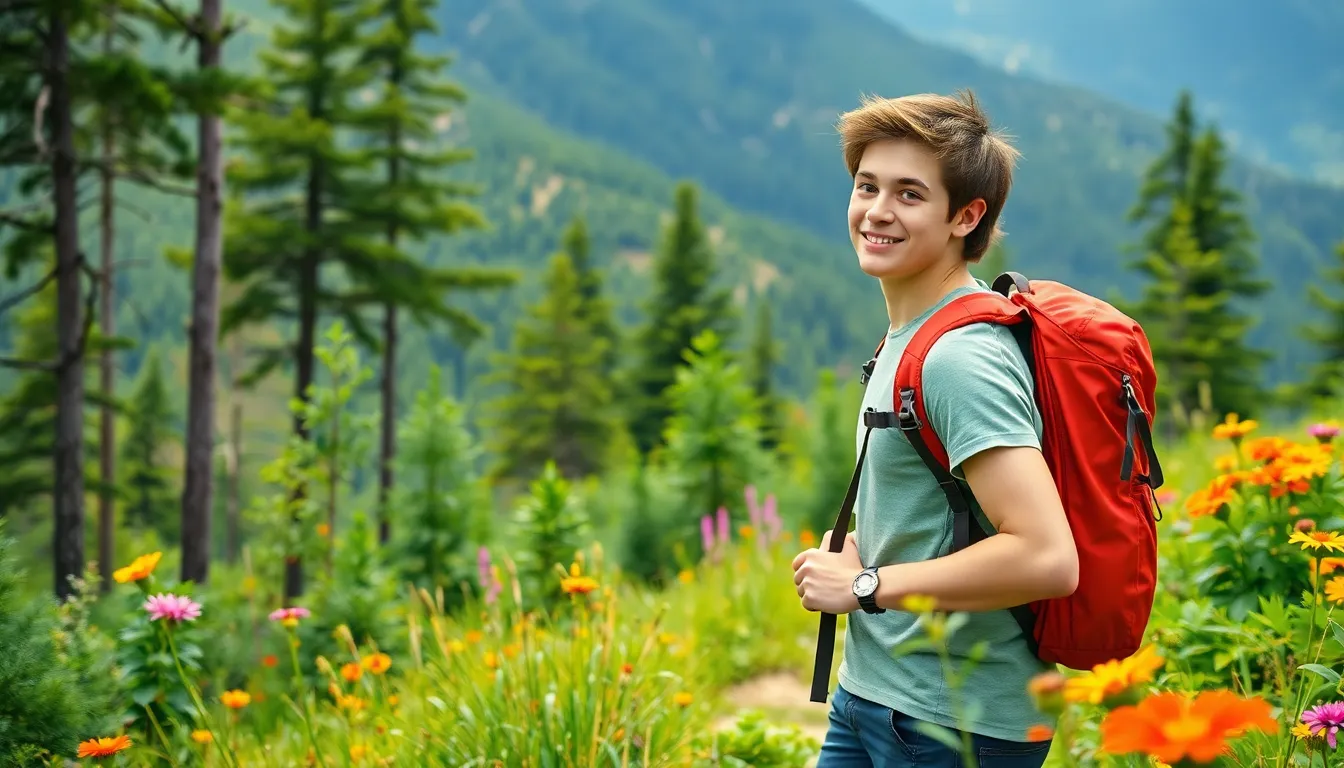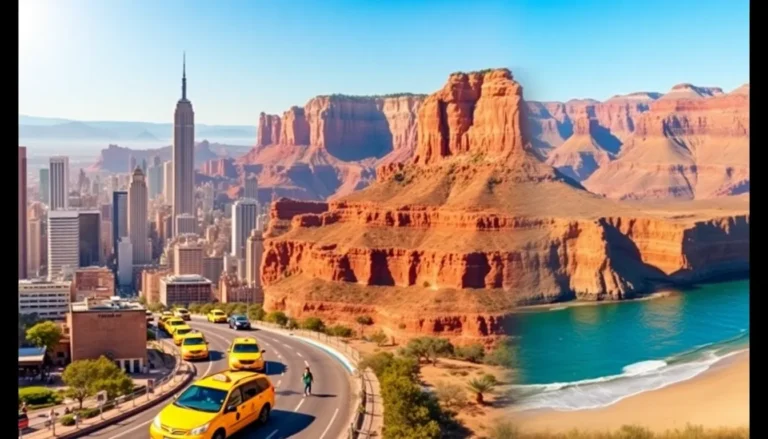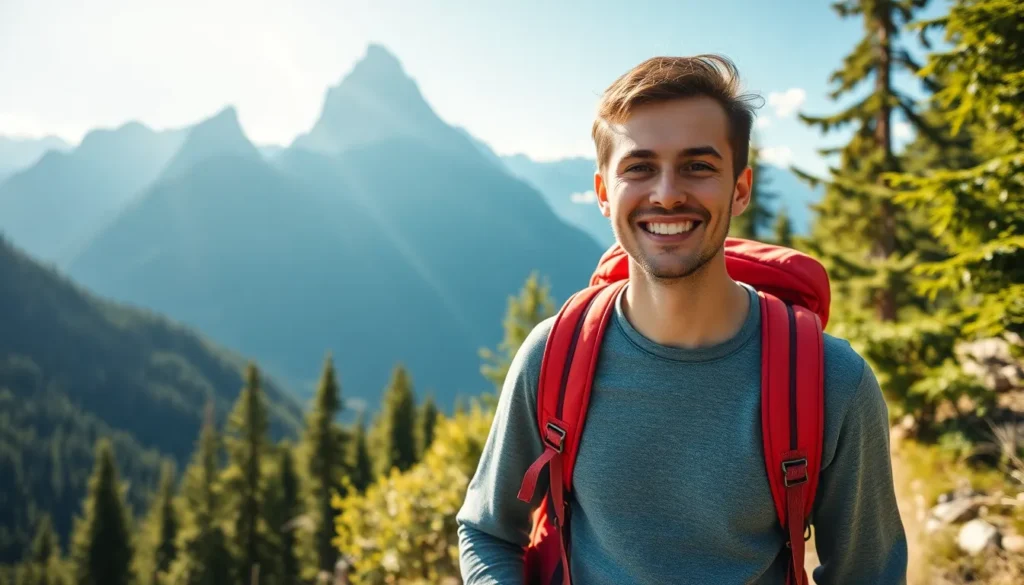Table of Contents
ToggleFor adventure seekers and nature lovers, backpacking offers an unparalleled way to explore the great outdoors. With the right gear and a sense of wanderlust, travelers can immerse themselves in breathtaking landscapes while discovering hidden gems off the beaten path. From majestic mountains to tranquil forests, the world is full of backpacking destinations that promise unforgettable experiences.
Whether it’s a weekend getaway or a months-long trek, choosing the right location can make all the difference. Each destination presents unique challenges and rewards, catering to various skill levels and preferences. As the popularity of backpacking continues to rise, it’s essential to uncover the best spots that inspire and invigorate the soul. Ready to hit the trails? Let’s dive into some of the top backpacking destinations that every adventurer should consider.
Popular Backpacking Destinations
Backpacking opens the door to unforgettable adventures across continents. Travelers can immerse themselves in diverse cultures, stunning landscapes, and thrilling challenges.
North America
North America boasts impressive backpacking trails filled with natural beauty.
- Appalachian Trail: Extending over 2,200 miles, this iconic trail runs from Georgia to Maine, offering lush forests and breathtaking views.
- Pacific Crest Trail: Spanning 2,650 miles from Mexico to Canada, this trail highlights deserts, mountains, and forests, providing varied landscapes.
- Yosemite National Park: Known for its granite cliffs and waterfalls, this park features numerous trails catering to all skill levels.
South America
South America is rich in adventure, culture, and biodiversity.
- Inca Trail: A UNESCO World Heritage site, this 26-mile trek leads to Machu Picchu, showcasing ancient ruins and stunning mountain scenery.
- Torres del Paine National Park: Located in Chile, it offers multiple trekking routes, including the famous ‘W’ circuit, known for its dramatic peaks and glacial lakes.
- Cerro Huayna Potosí: A challenging ascent in Bolivia, attracting mountaineers with its high-altitude trekking experience.
Europe
Europe features an abundance of picturesque trails amidst charming villages and historical landmarks.
- West Highland Way: This 96-mile outing in Scotland traverses rugged terrain and scenic landscapes, culminating at Fort William.
- Camino de Santiago: A network of trails leading to Santiago de Compostela in Spain, with routes offering rich cultural experiences and community.
- Dolomites Trail: In Italy, this UNESCO-listed region showcases breathtaking mountain scenery and an array of hiking options.
Asia
Asia presents unique backpacking experiences with diverse terrains and cultural heritage.
- Annapurna Circuit: In Nepal, this classic trek covers approximately 128 miles, featuring diverse landscapes and various ethnic cultures.
- Mount Fuji: Japan’s highest peak draws backpackers for its scenic trails and cultural significance, as it offers stunning views from the summit.
- Himalayan Treks: Regions like Bhutan offer thrilling hikes through remote villages and monasteries, providing pristine nature and cultural immersion.
Africa
Africa’s backpacking routes offer a mix of adventure, wildlife, and stunning landscapes.
- Mount Kilimanjaro: As Africa’s tallest peak, this trek draws adventurers aiming to reach Uhuru Peak through various scenic routes.
- Drakensberg Mountains: South Africa’s highest range features diverse hiking trails with rugged cliffs and impressive waterfalls.
- Sahara Desert: Trekking through this vast desert yields unique experiences, offering stunning sunsets and the opportunity to meet local tribes.
Tips for Choosing the Right Destination

Selecting the right backpacking destination involves multiple considerations. The right choice enhances the adventure and ensures safety and enjoyment.
Consider Your Skill Level
Determining skill levels is crucial for a rewarding backpacking experience. Beginners may prefer easier trails, such as the Appalachian Trail or the West Highland Way, which offer moderate terrain and comprehensive resources. Intermediate hikers may seek challenges, such as the Pacific Crest Trail or the Inca Trail, where varying elevations demand more experience. Advanced backpackers often gravitate towards routes like the Annapurna Circuit or Mount Kilimanjaro, where technical skills and endurance become vital.
Assess Travel Restrictions
Checking travel restrictions remains a necessary step in destination planning. Some countries impose specific regulations on hikers, including permits, fees, and safety guidelines. For instance, the Torres del Paine requires booking in advance and adhering to park rules. In contrast, areas like the Dolomites may have fewer restrictions but still necessitate knowledge of local regulations. Researching these policies in advance ensures compliance and reduces potential inconveniences upon arrival.
Evaluate Climate and Seasons
Evaluating climate and seasons significantly impacts the backpacking experience. Some regions feature distinct rainy and dry seasons, which affect trail conditions and safety. For example, Spring and Fall often present optimal hiking conditions in the Sierra Nevada, avoiding the overwhelming summer heat. Conversely, hiking on the Inca Trail between May and September offers reliable weather yet draws larger crowds. Understanding these factors allows for informed planning to enjoy the trip fully.
Essential Gear for Backpacking
Having the right gear is crucial for a successful backpacking adventure. Essential items enhance comfort, safety, and overall experience during the journey.
Backpacks
Selecting an appropriate backpack significantly impacts comfort and organization. Choose a backpack with a capacity between 40 to 70 liters for multi-day trips. This size accommodates necessary gear while maintaining a manageable weight. Look for features like padded straps, a hip belt, and adjustable lengths for added support. Assess the pack’s weight distribution to prevent fatigue and ensure stability on rugged terrains.
Clothing
Wearing suitable clothing enhances protection and comfort in varying weather conditions. Select moisture-wicking base layers and breathable, quick-drying fabrics for the upper and lower body. Pack insulating layers, such as fleece or down jackets, for cooler temperatures. Incorporate waterproof outer layers, including jackets and pants, to shield against rain. Sturdy, supportive footwear is vital, with hiking boots offering protection for the feet and ankles during long treks. Don’t forget to include moisture-wicking socks to prevent blisters.
Navigation Tools
Utilizing reliable navigation tools is essential for effective route finding. Carry a detailed, topographic map of the area as a primary resource. A compass serves as a backup for navigation in case technology fails. GPS devices and smartphone apps provide additional guidance with features like real-time location tracking. Ensure electronic devices are fully charged and consider bringing a portable power bank for longer trips, particularly where access to charging options is limited.
Planning Your Backpacking Trip
Planning a backpacking trip involves careful consideration of routes, budget, and safety. Focusing on these key aspects enables travelers to maximize their outdoor experiences.
Itineraries and Route Planning
Creating an effective itinerary ensures a well-structured journey. Define daily hiking distances, typically ranging from 10 to 15 miles depending on skill level. Select trails that match fitness levels and prioritize interest points, such as scenic overlooks or cultural sites.
Utilize resources like alltrails.com and local guidebooks for up-to-date trail information. Make note of water sources and campsites, ensuring adequate hydration opportunities. Adjust plans based on trail conditions, weather forecasts, and local guidelines.
Budgeting for Your Trip
Establishing a budget is vital for a successful backpacking trip. Analysts suggest allocating between $25 to $50 per day, covering food, lodging, and transportation. Factor in costs for permits, which may range from $10 to $40, depending on the destination.
Choose food options wisely by selecting lightweight, non-perishable items like dehydrated meals, nuts, and energy bars. Invest in quality gear that lasts, with initial costs influenced by brand and functionality. Lastly, account for travel expenses and any guided services if necessary.
Safety and Health Considerations
Prioritizing safety enhances the overall experience during backpacking trips. Familiarize oneself with first aid basics, carrying a compact kit including bandages, antiseptics, and pain relievers.
Stay aware of wildlife encounters, keeping food secured to prevent attracting animals. Maintain hydration, consuming approximately two liters of water daily for optimal health.
Acclimatization is crucial for high-altitude treks; ascend slowly to avoid altitude sickness. Check local conditions for potential hazards, including sudden weather changes or challenging terrain, ensuring preparedness for any situation.
Backpacking offers a thrilling way to connect with nature and experience the world in a unique way. With countless destinations to explore across various continents there’s no shortage of breathtaking landscapes and cultural encounters. By choosing the right trail and preparing adequately with essential gear adventurers can embark on unforgettable journeys.
Whether one seeks the serene paths of North America or the challenging terrains of Asia each destination presents its own set of rewards. The right planning and consideration of skill levels ensure that every backpacking trip is not only safe but also enriching. Embracing the spirit of adventure is key to discovering the hidden gems that await on every trail.







